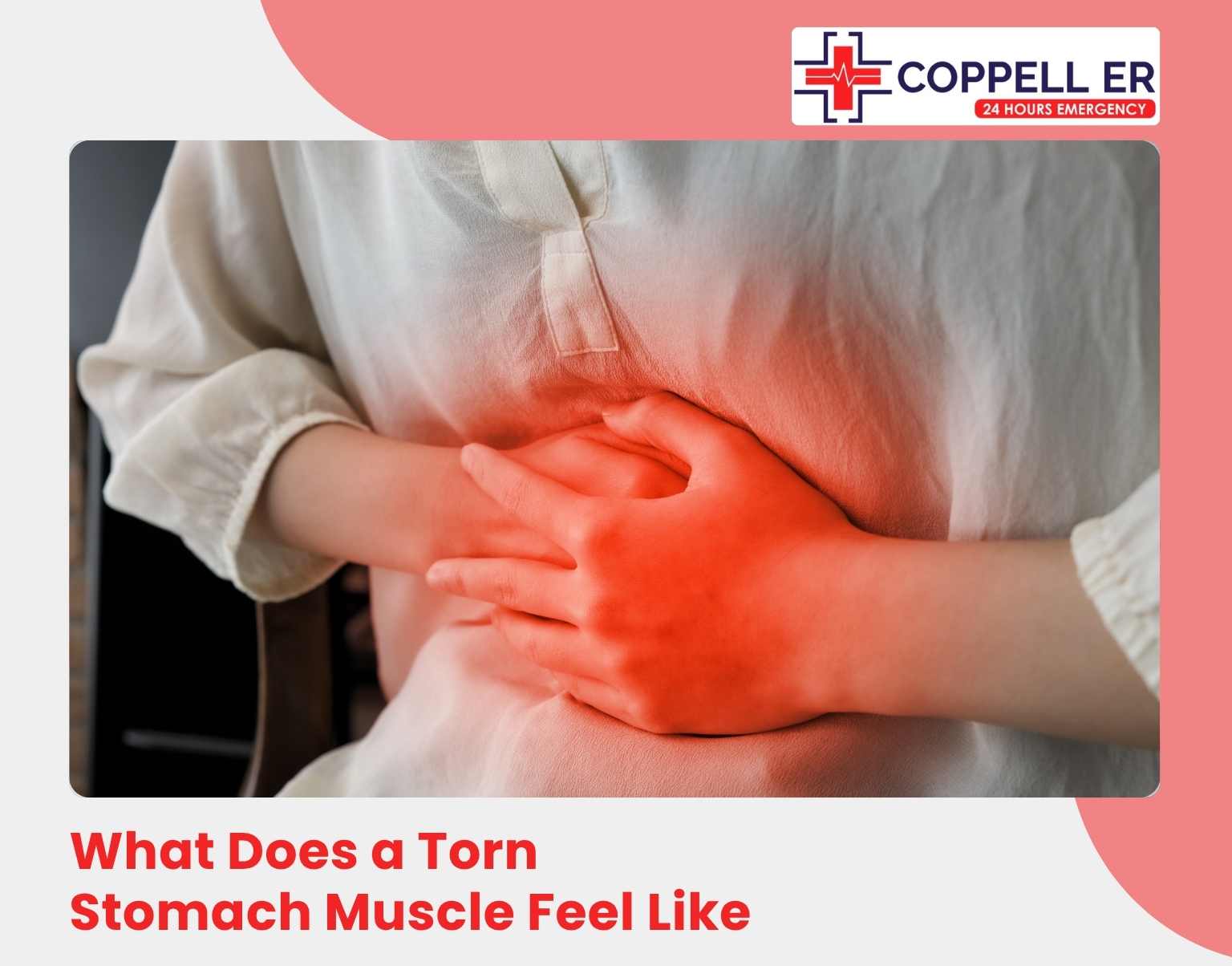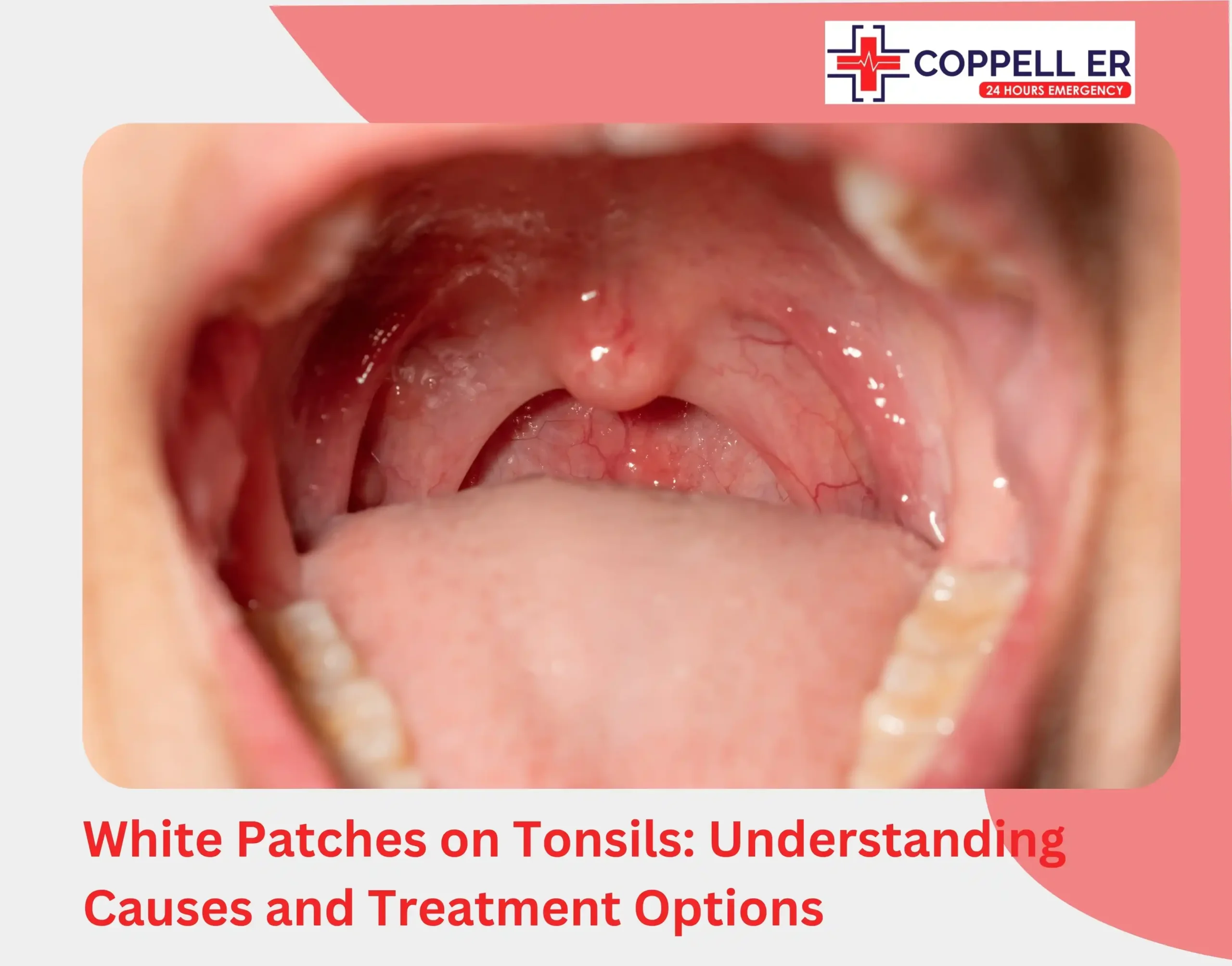A torn stomach muscle, also known as an abdominal muscle strain, is a common injury that can cause significant discomfort. Whether you’re an athlete, a fitness enthusiast, or someone who has experienced a sudden strain, understanding the symptoms, causes, and treatment options is essential for a smooth recovery.
If you’re experiencing abdominal pain, this guide can help you determine what does a torn stomach muscle feel like or something else, such as a hernia, and when to seek care.
What is a Torn Stomach Muscle?

Muscle strain is an injury where the muscles of the abdomen are overstretched or torn. These muscles, including the rectus abdominis, the obliques, and the transversus abdominis, play a crucial role in contributing to movement and stability. The strain happens when these muscles are stressed beyond their capacity, causing pain and discomfort.
What are the abdominal muscles?

The abdominal muscles are a group of muscles located in the abdomen that support movement, maintain posture, facilitate breathing, and protect the internal organs. They form the abdominal wall and are key to core stability.
Here’s a simple breakdown:
Muscle |
Location |
Primary Function |
| Rectus Abdominis | Front, vertical | Flexes spine, supports posture |
| External Obliques | Sides, diagonal | Twisting, side-bending |
| Internal Obliques | Under external obliques | Twisting, core stability |
| Transversus Abdominis | Deep, horizontal | Compresses abdomen, stabilizes spine |
What Does a Torn Stomach Muscle Feel Like?
The torn stomach muscle pain feels in the abdomen, which can vary from mild discomfort to severe pain depending on the injury’s extent. Here are the common symptoms:
- Sharp or dull pain in the abdomen, often sudden at the time of injury.
- Tenderness when pressing on the affected area.
- Swelling or bruising around the injury site.
- Muscle spasms or cramping, which may feel like involuntary tightening.
- Difficulty with movements like bending, twisting, lifting, or even sitting up.
- Pain that worsens with activities such as coughing, sneezing, or vigorous exercise.
The severity of the strain can be classified into three levels, as shown in the table below:
Severity |
Symptoms |
| Mild | Slight pain, no loss of strength, minimal discomfort during activity. |
| Moderate | Increased pain, swelling, bruising, noticeable weakness in the abdomen. |
| Severe | Intense pain, possible bulge or gap in the muscle, significant weakness or loss of function. |
What Causes Torn Stomach Muscles?

A torn stomach muscle can occur due to various activities or conditions that put excessive stress on the abdominal muscles. Common causes include:
- Overexertion during exercise or sports, especially without a proper warm-up.
- Improper techniques when lifting heavy objects or performing exercises.
- Sudden twisting or jerking movements, common in sports like tennis or baseball.
- Violent coughing or sneezing can strain the muscles unexpectedly.
- Lifting heavy objects incorrectly puts undue pressure on the abdomen.
- Tight or fatigued abdominal muscles increase vulnerability to injury.
- Previous injuries in the area may weaken the muscles.
Athletes in sports requiring rapid trunk movements, such as football or weightlifting, are at higher risk. However, anyone can experience this injury during everyday tasks if precautions aren’t taken. For example, lifting a heavy box without bending at the knees can strain the abdominal muscles.
How to Tell If It’s a Muscle Strain or a Hernia?
Abdominal muscle strains and hernias can feel similar, but they have distinct differences. A hernia occurs when an organ or tissue protrudes through a weak spot in the muscle wall, often causing a noticeable bulge. Here’s how to differentiate them:
- Muscle Strain: Pain is typically tied to movement and improves with rest. There’s no bulge or lump, though swelling or bruising may occur.
- Hernia: A visible or palpable bulge in the abdomen, especially when straining, coughing, or lifting. Pain may be constant or worsen with activity, and severe cases can cause nausea or vomiting.
The following table compares the two conditions:
Condition |
Symptoms |
| Muscle Strain | Pain, tenderness, swelling, bruising, muscle spasms, difficulty moving. |
| Hernia | Bulge or lump, persistent or activity-related pain, and possible nausea or vomiting in severe cases. |
If you notice a bulge or if pain doesn’t improve with rest, rush to the nearest emergency room to rule out a hernia or other serious conditions. Misdiagnosing a hernia as a muscle strain can lead to complications, so professional evaluation is crucial.
How to Diagnose a Torn Stomach Muscle?

Diagnosing a torn stomach muscle typically involves:
- Review your symptoms and ask how the injury occurred, such as during exercise or lifting.
- Perform a physical exam to assess pain location, tenderness, and muscle strength.
- Check for signs of a hernia or other conditions, such as a bulge or abnormal swelling.
In most cases, a physical exam is sufficient for diagnosis. However, if the injury is severe or other causes are suspected, imaging tests may be ordered, such as:
- X-rays to rule out rib or spine fractures.
- Ultrasounds or CT scans to evaluate muscle damage or other abdominal issues.
Treatment Options
Most torn stomach muscles heal with conservative treatments, focusing on rest and symptom relief. Here are the main treatment methods:
- Rest: Avoid activities that cause pain to allow the muscle to heal. Limit bending, twisting, or heavy lifting.
- Ice and Heat Therapy: Apply ice packs for 10-15 minutes every few hours in the first 48 hours to reduce swelling and pain. After 48 hours, switch to heat to promote blood flow and healing.
- Pain Relief: Over-the-counter nonsteroidal anti-inflammatory drugs can reduce pain and inflammation.
- Physical Therapy: Work with a physical therapist to perform gentle stretching and strengthening exercises to restore muscle function.
- Support: Wear an abdominal brace or compression garment to support the muscles and minimize swelling.
Most mild to moderate strains heal within 3 to 6 weeks with proper care. Severe strains may take longer, and in rare cases, surgery might be needed for complete muscle tears. Physical therapy can provide tailored exercises to speed recovery and prevent re-injur.
Prevention Tips
Preventing a torn stomach muscle involves adopting habits to protect your abdominal muscles. Consider these strategies:
- Warm up properly before exercise or physical activity to prepare your muscles.
- Use correct techniques when lifting heavy objects (bend at the knees, not the waist) or performing exercises.
- Strengthen abdominal muscles with core exercises like planks, Pilates, or yoga.
- Avoid overexertion by listening to your body’s limits and resting when needed.
- Maintain good posture to reduce unnecessary strain on your abdominal muscles.
When to Visit the Emergency Room?

While many torn stomach muscles can be managed at home, certain symptoms warrant medical attention. Visit Coppell Emergency Room if:
- Pain is severe or doesn’t improve after a few weeks of rest and home treatment.
- You notice a bulge or lump in your abdomen, which could indicate a hernia.
- You experience symptoms like fever, nausea, vomiting, or inability to pass gas or have a bowel movement.
- The injury affects daily activities, such as walking, sleeping, or working.
Recovery Time
Recovery from a torn stomach muscle depends on the injury’s severity:
- Mild strains: Typically heal in 1-3 weeks with rest and basic care.
- Moderate strains: May take 3-6 weeks, often requiring physical therapy.
- Severe strains: Can take 6 weeks or more, with possible medical intervention.
During recovery, gradually return to activities to avoid re-injury. Follow your doctor’s or physical therapist’s guidance on when to resume exercise or sports (Medical News Today).
FAQs
What does a torn stomach muscle feel like?
A torn stomach muscle usually feels like sudden sharp or dull pain in the abdomen, often worse when bending, twisting, coughing, or sneezing. You may also notice tenderness, swelling, or bruising in the area.
How can I distinguish between a torn muscle and a hernia?
A muscle tear causes pain that changes with movement and improves with rest. A hernia often produces a visible or noticeable bulge in the abdomen, especially when straining, and may come with nausea or digestive issues.
How is a torn stomach muscle diagnosed?
Doctors usually perform a physical exam and ask about how the injury happened. In some cases, imaging tests like ultrasound or MRI may be recommended to confirm the severity or rule out other issues.
How long does recovery take?
Recovery time depends on the severity of the injury. Mild tears can heal within 1–3 weeks, moderate strains may take 3–6 weeks, and severe tears can take longer and may need medical treatment.
What helps with healing at home?
Rest, applying ice for the first 48 hours, then gentle heat, and taking over-the-counter pain relievers can help. Gentle stretching and strengthening may be added later, but only when pain improves.
When should I see a doctor?
You should seek medical care if the pain is severe, you notice a bulge, or symptoms like fever, nausea, or worsening discomfort appear. Also, if the injury limits your ability to move or perform daily activities, professional care is needed.




